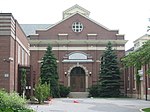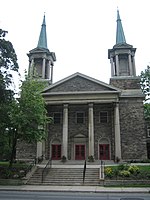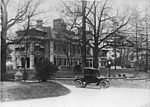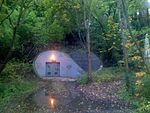Arrowsmith School
The Arrowsmith School is a private school in Toronto, Ontario, for children in Grades 1 to 12 with learning disabilities (also referred to as "specific learning difficulties"). The original Arrowsmith School was founded in Toronto in 1980 by Barbara Arrowsmith Young. A second location was opened in May 2005 in Peterborough, Ontario. The Eaton Arrowsmith School, which is modelled on the Toronto school and founded by Howard Eaton, was opened in 2005 in Vancouver, British Columbia with two further branches established in Canada and one in the United States between 2009 and 2014. The school's methodology, known as the Arrowsmith Program, was founded by Arrowsmith Young in 1978 from exercises that she had begun devising for herself in 1977 and which she has said enabled her to overcome her own severe learning difficulties. Her own struggle with learning disability and the rationale for her program are described in her 2012 book The Woman Who Changed Her Brain. According to Arrowsmith Young, her methodology is based on research into the principle of neuroplasticity, which suggests that the brain is dynamic and constantly rewiring itself. The program has been incorporated into other public and private schools in Canada, the United States, Australia, and New Zealand, but has drawn skepticism and criticism from several cognitive psychologists and neuroscientists.
Excerpt from the Wikipedia article Arrowsmith School (License: CC BY-SA 3.0, Authors).Arrowsmith School
St. Clair Avenue West, Toronto
Geographical coordinates (GPS) Address Nearby Places Show on map
Geographical coordinates (GPS)
| Latitude | Longitude |
|---|---|
| N 43.6856 ° | E -79.4056 ° |
Address
St. Clair Avenue West 243
M4V 3A5 Toronto
Ontario, Canada
Open on Google Maps









